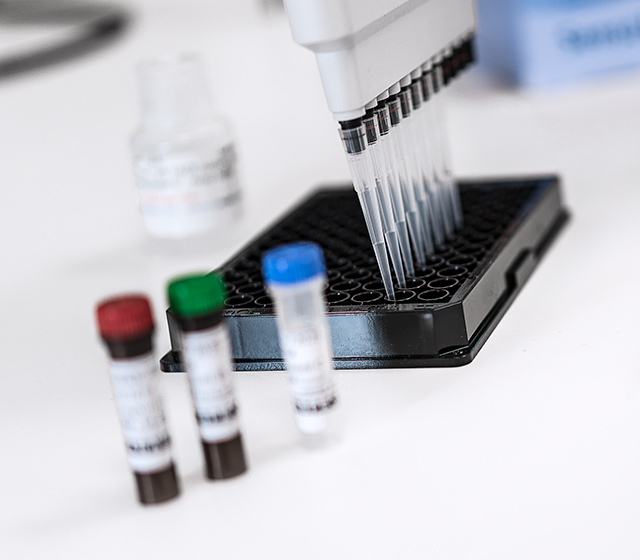Peroxidase Activity
Peroxidases
Our fluorimetric Sensolyte® assay kit uses a highly pure ADHP substrate (10-acetyl-3,7-dihydroxyphenoxazine), which is considered the most stable and sensitive fluorogenic horse radish peroxidase (HRP) substrate.
Figure : Detection of HRP using the SensoLyte® Luminescent Peroxidase Assay Kit. The detection limit can reach the femtogram range (n=3, mean±S.D).
Horse Radish Peroxidase ImmunoAssays
Together with Alkaline Phosphatase (AP), Horseradish peroxidase (HRP) is the most extensively used enzyme in immunoassays like ELISA and Western Blotting. The enzyme is typically conjugated to the secondary antibody, which allows amplifying the antigen-antibody binding signal.
More about peroxidases
Peroxidases are a group of heme-containing enzymes that catalyze oxidation-reduction reactions. Hydrogen peroxide (H2O2) or lipid peroxides are the substrates used by peroxidases for a number of oxidative reactions.
Peroxidases are found in bacteria, fungi, plants and animals. Cellular peroxidases play an important role in protecting cell from oxidative injury.
Peroxidases, in particular, HRP (horseradish peroxidase), are important enzymes for both histochemistry and ELISAs since they generally have excellent stability and low molecular weight. Although there are many good chromogenic and luminogenic substrates for detecting HRP, there are very few fluorogenic peroxidase substrates used for peroxidase detection.
Fluorogenic peroxidase substrates such as dihydrofluoresceins (also known as fluoresceins), dihydrorhodamines and dihydroethidium (hydroethidine) are converted to highly fluorescent products in the presence of the enzyme and hydrogen peroxide. However, these dihydro compounds are not stable due to auto oxidation by air.
